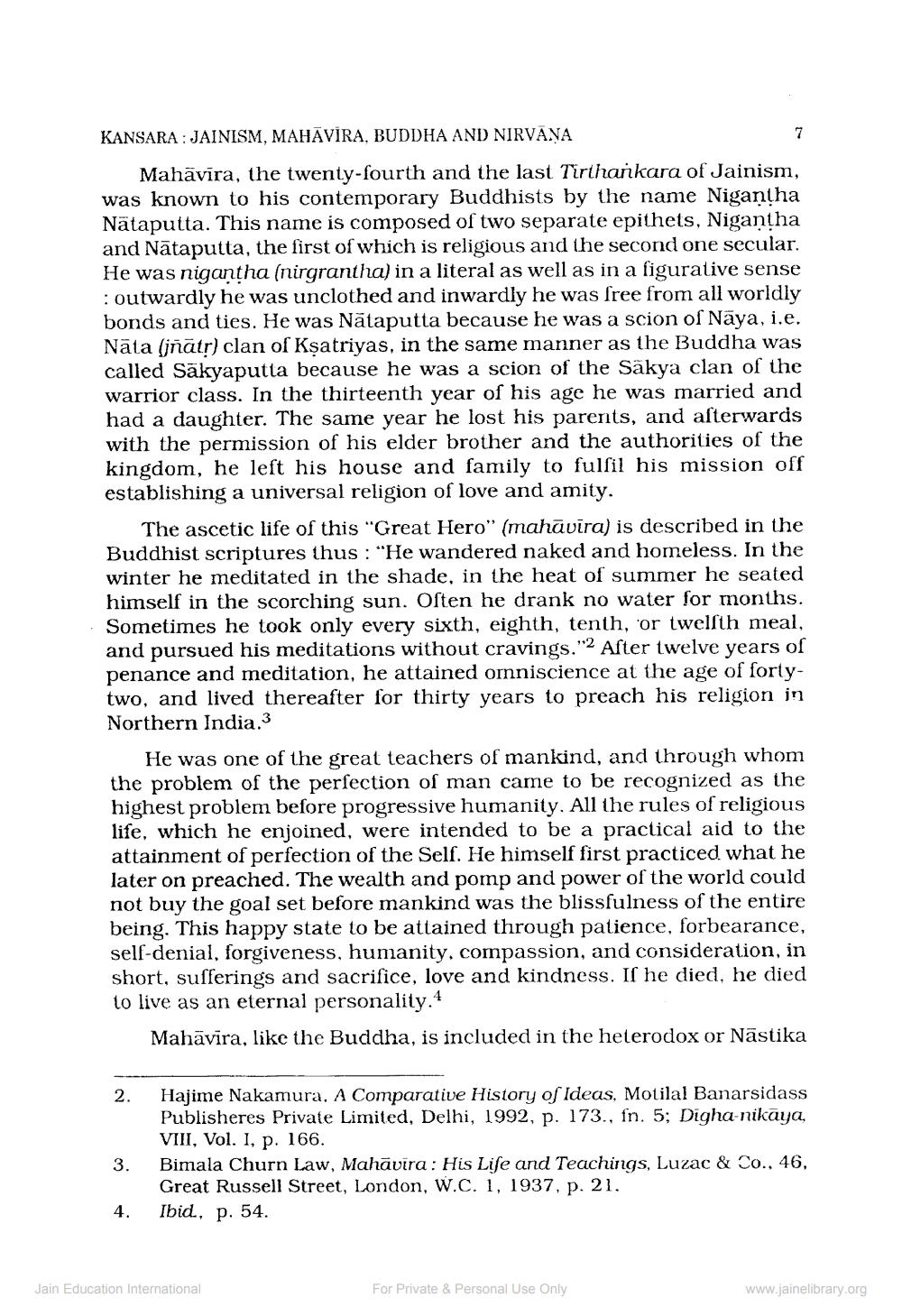________________
KANSARA JAINISM, MAHĀVIRA, BUDDHA AND NIRVANA
Mahavira, the twenty-fourth and the last Tirthankara of Jainism, was known to his contemporary Buddhists by the name Nigantha Nätaputta. This name is composed of two separate epithets, Nigantha and Nataputta, the first of which is religious and the second one secular. He was nigantha (nirgrantha) in a literal as well as in a figurative sense : outwardly he was unclothed and inwardly he was free from all worldly bonds and ties. He was Nätaputta because he was a scion of Naya, i.e. Näta (jñātṛ) clan of Kṣatriyas, in the same manner as the Buddha was called Sakyaputta because he was a scion of the Sakya clan of the warrior class. In the thirteenth year of his age he was married and had a daughter. The same year he lost his parents, and afterwards with the permission of his elder brother and the authorities of the kingdom, he left his house and family to fulfil his mission off establishing a universal religion of love and amity.
The ascetic life of this "Great Hero" (mahavira) is described in the Buddhist scriptures thus: "He wandered naked and homeless. In the winter he meditated in the shade, in the heat of summer he seated himself in the scorching sun. Often he drank no water for months. Sometimes he took only every sixth, eighth, tenth, or twelfth meal, and pursued his meditations without cravings."2 After twelve years of penance and meditation, he attained omniscience at the age of fortytwo, and lived thereafter for thirty years to preach his religion in Northern India.3
He was one of the great teachers of mankind, and through whom the problem of the perfection of man came to be recognized as the highest problem before progressive humanity. All the rules of religious life, which he enjoined, were intended to be a practical aid to the attainment of perfection of the Self. He himself first practiced what he later on preached. The wealth and pomp and power of the world could not buy the goal set before mankind was the blissfulness of the entire being. This happy state to be attained through patience, forbearance, self-denial, forgiveness, humanity, compassion, and consideration, in short, sufferings and sacrifice, love and kindness. If he died, he died to live as an eternal personality.4
Mahavira, like the Buddha, is included in the heterodox or Nastika
7
2. Hajime Nakamura. A Comparative History of Ideas, Motilal Banarsidass Publisheres Private Limited, Delhi, 1992, p. 173., fn. 5; Digha-nikāya, VIII, Vol. I, p. 166.
Bimala Churn Law, Mahavira: His Life and Teachings, Luzac & Co., 46, Great Russell Street, London, W.C. 1, 1937, p. 21.
Ibid., p. 54.
3.
4.
Jain Education International
For Private & Personal Use Only
www.jainelibrary.org




